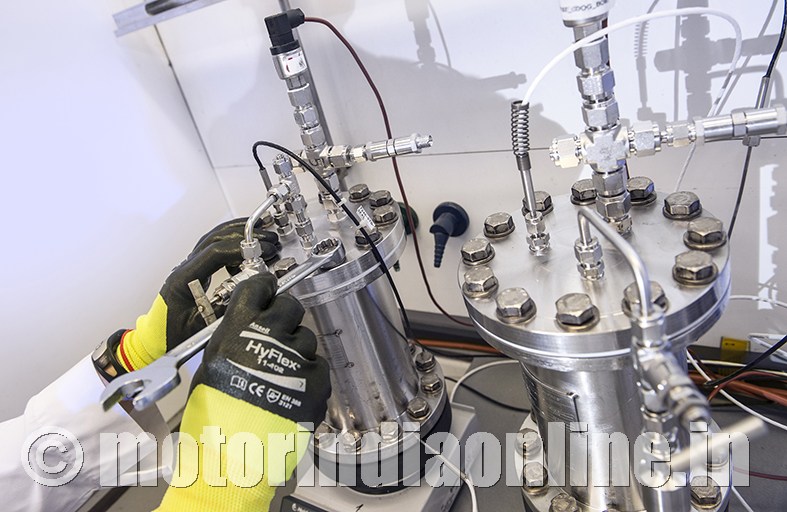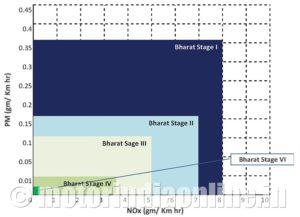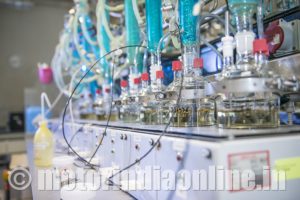The inception of high-performance cars and trucks make ever-increasing demands on every aspect of engine maintenance. As recent systems run much faster and at higher temperatures, modern engines need highly effective cooling systems that ensure they are operating at their optimal level all year round. Modern engine designs have resulted in the introduction of new innovative materials in engine cooling systems. The use of traditional antifreeze often has proven to provide in many conditions a negative effect on the life of a modern engine cooling system.
Consequently advanced engine coolants are being developed not only to remove heat from the engine but also to act as heat carrier fluid to support add-on systems like EGR and WHR.
KEY TECHNOLOGY DRIVER
DRIVERS & INFLUENCERS
The performance need of engine cooling system has steadily improved as the power output and density of internal combustion engines gradually increased. The current engine designer gives increased attention towards improving fuel economy and lowering emissions output. To achieve those goals engine downsizing and improving power density has become one of the preferred options. It is an attempt to achieve higher power outputs compared to conventional engine with smaller size (or at least with same size) with minimal losses and less weight/ power output.
With increasingly compact engine design and higher specific power, the density of the waste heat generated has increased significantly. Removing heat from an increasingly restricted space is a particular concern at vulnerable regions. Rapid engine warm-up is critical in attaining low fuel consumption and emission readings in drive-cycle tests, as engine efficiency and emissions are less optimal at low temperature as used in a cold start testing program. Recent developments have seen thermal management features integrated into the engine management structure to enable an optimized balance between engine warm-up, cabin condition, catalyst light-off, and emissions performance. Although the current engine cooling systems are passive systems, the engine management system controls the heat distribution in the engine and vehicle by compensating engine controls, such as spark timing and air–fuel ratio to regulate engine power output, as well as heat production and distribution to each part of the engine.
KEY MARKET EXPECTATION
Some of the basic requirements of engine coolant are
» Ease of use
» Reduced maintenance
» Reliability
» Robust performance
» Toxicological/Environmental acceptance e.g. REACH, SVH, black/grey list
Apart from above key market expectation most of the time economic considerations i.e. affordability prevails technological advantages. Hence modern engine coolant has to be affordable and at the same time it has to provide the technological edge.
PERFORMANCE ELEMENTS
Following the modern engine technologies, comprising of increasing amount of diverse materials, coolant is expected to provide improved thermal load resistance and demonstrate improved corrosion protection.
More OEM’s are now shifting towards extended life Coolant, which gives effective corrosion protection as well as heat transfer up to several hundred thousand kilometres without topping up with the new coolant / corrosion inhibitors. Extended life coolants are the next generation coolants which are mainly based on organic additive backbone. In some cases a smaller amount of in-organic additives is added.
VEHICLE DEVELOPMENT
GLOBAL DRIVERS
The development of future engines is mainly expected to be governed by three factors: Fuel Economy (energy efficiency), Globalization of engine platforms and drivers comfort (Horse power / individual preferences. At the same time region specific emission norms will be an additional important factor to consider while designing & developing newer engines and fuel efficient concepts.
EMISSION NORMS EVOLUTION
In the preview of stringent emission regulation & norms, engine & allied system are being developed to comply to suit these changing requirements. Similarly emission control technologies in the advanced engine have seen upgrades. The latest example is Emission Control Norms Bharat Stage VI which not identical but can be considered equivalent to Euro VI.
Powertrains have many challenges and opportunities in near future in view of emission, on board diagnostics and CO2 regulations. Drastic shift in power train technologies, expected post 2020, makes it even more complex. To help resolve this more stringent requirement driven by emission norms (BS VI) the engine cooling systems will need heat transfer fluid that are more capable to sustain high heat loads.
(Source:http://www.cpcb.nic.in/Vehicular_ Exhaust.php Central Pollution Control Board, India)
To meet the stringent requirement, the exhaust gases are treated well before release in to environment. E.g. Urea Tank (or Ad Blue) is used to treat Nitrous gases resulting from fuel combustions. For optimum function urea tank temperature has to be maintained in between 70 to 90°C & this is achieved by engine coolant which acts as thermic fluid in this case.
COOLANT CHALLENGES & OUTLOOK
Following are some of the effects on the cooling systems
EFFECT ON COOLANT
Higher heat input to the coolant shall
» Accelerate most chemical reactions in a cooling system
» Speed up corrosion
» Speed up oxidation of the coolant
» Negatively affect coolant performance
» Lead to boiling conditions and increased risk for cavitation
Higher coolant flow rates to meet the increasing demand of heat removal will increase pump energy leading to higher chance for erosion and cavitation. An increased and different metal surface poses challenges like
» Compatibility
» Deposits/blockages
» Local corrosion
» Increase in Corrosion Sensitivity
FUTURE COOLANT REQUIREMENTS WILL BE MORE FOCUSED ON:
» Optimal long term heat transfer characteristics
» Oxidation stability of additives and base fluid
» Robust against sludge formation (heater core, radiator…)
» Avoidance of hard water scale
» Material protection of ALL system materials at high temperature
» Metal alloys, elastomers and plastics, Brazed Al surfaces, Cavitation protection, Hot spot protection
Toxicological and environmental acceptance
SUMMARY
Over the years we have seen evolution of simple engine cooling system to an intelligent cooling system comprising of many additional components. In next generation vehicles engine coolant is not only expected to remove heat but to carry heat and hence will play a key role in the thermal management. Product development in this direction will be focused on more specific applications. Future coolants i.e. thermal management fluids are expected to be based on Organic Additive Technology platform.
Arteco has the knowledge & in-house technology based on OAT backbone: Pure OAT, Si-OAT, P-OAT and N-OAT.
CONCLUSION
Core drivers for changes in engine technology will remain focused on carbon foot print (fuel consumption, CO2 generation). Incremental improvements will be effective path short term however in longer term electrification will depend on legislation push and logistical readiness SYSTEM.
New concept on transferring heat and recovering energy are being continuously developed, tested and implemented which demands replacement of existing parts / materials with new one.
Thermal management fluid are expected to play multiple roles, i.e. to provide protection against overheating as well as freezing, to carry heat from one component to the other (i.e. demand based cooling) and at the same time show more robustness against temperature, metal surface and impurities. However from the ecological point of view thermal management fluids shall meet the tighter restrictions following toxicity & environmental legislations.
www.arteco-coolants.com | info@arteco-coolants.com | 020 672 860 010


